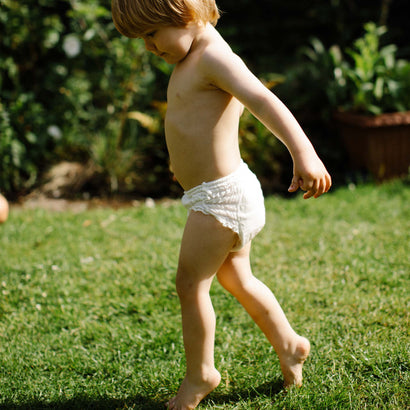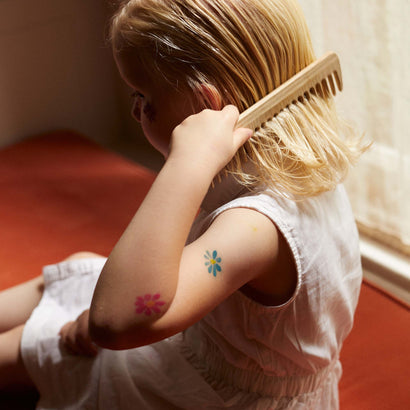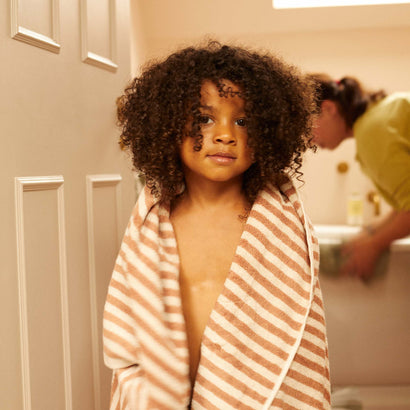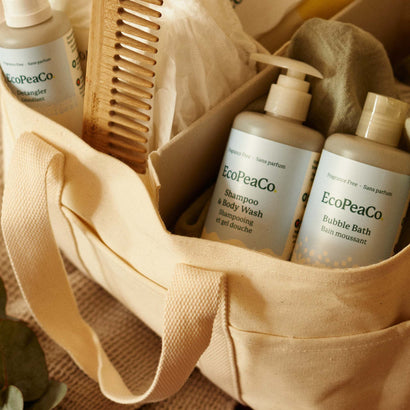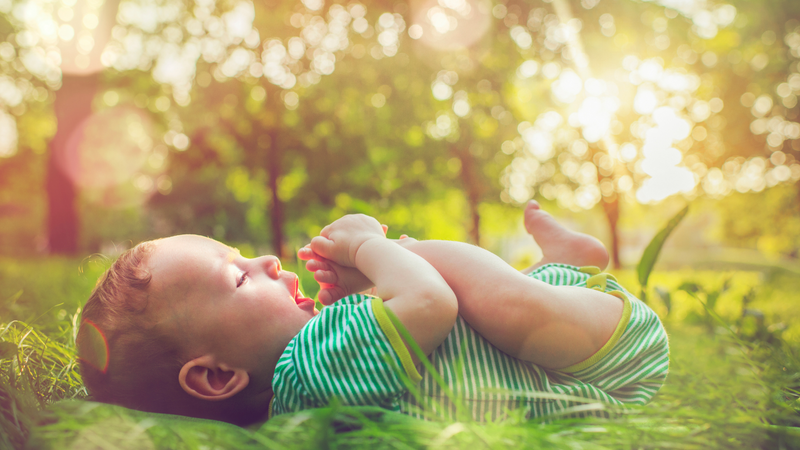There is no shortage of potentially harmful elements in many common baby products (read our blog here). While this might feel alarming and overwhelming, take heart that there are many simple steps you can take to limit your child’s risk. With a bit of research, dedication to spending more time perusing labels, and a willingness to purchase brands that use safe ingredients, you can rest easy, knowing you’re doing everything you can to keep your baby safe.
Following are six ways to avoid harmful ingredients in baby products:
Check labels for harmful ingredients. The best way to avoid purchasing products that contain harmful ingredients is to look for those ingredients on labels. But because it’s near impossible to commit these ingredients to memory, you can keep a list of the names of the most toxic culprits to reference when making baby product purchases. Our blog, 20 Ingredients to Always Avoid in Baby Products is a good place to start when crafting this list.
Check labels for encouraging phrases: In addition to knowing what you don’t want to see on a label, it’s also important to know what you do want to see. Here are common terms sometimes used on labels that indicate the brand has intentionally ensured certain harmful ingredients are not in their product.
-Paraben-free
-Fragrance-free
-No phthalates or Phthalate-free
-Talc-free
-Chlorine-free or Totally Chlorine Free (TCF)
-Not fire resistant
-MADE SAFE certified
-SLS- and SLES-free
-Dye-free
Look for products that are hypoallergenic and dermatologist-tested. If a product is labeled as “hypoallergenic,” it typically means that it was formulated with ingredients that have the least possible risk of causing an allergic reaction. Essentially, there’s less of a chance that it’s filled with toxins. Regarding the term “dermatologist-tested,” this indicates that the product has been analyzed by an expert in skin conditions who confirmed it’s unlikely to lead to adverse effects.
Explore the Environmental Working Group’s Skin Deep Cosmetic Safety Database: If you want an easy way to locate safe products, utilize the Environmental Working Group’s (EWG) online guide that analyzes 7,600 ingredients in nearly 62,000 products. For example, if you’re looking for baby shampoo, you would type that phrase in their search bar, then be met with an analysis of over 200 baby shampoo brands. The safest brands are marked with the “EWG Verified” mark. When you click on a particular product you can access a detailed list of the product’s ingredients, and if they pose any concerns.
Buy from brands transparent about their ingredients: Be wary of any brand that isn’t completely upfront with their ingredients. Instead, opt for those that are transparent about everything that goes into their products. Some of the most transparent companies give you a full breakdown of what’s in their products, and why they use those specific ingredients.
Keep an eye on your baby. While this might sound like a no-brainer, it’s easy to miss the reaction your baby has to a certain product. Because of this, it’s wise to pay attention to your baby’s skin, and overall demeanor, after being exposed to a new product. For example, if they develop a rash after you use a new brand of baby wipes, that could be an indicator that there’s something in the wipes that doesn’t agree with your baby’s skin. This keen observation can support you in eliminating irritants and toxins from your home before they become a real problem.
If you’re thinking that it seems like a full time job to discover safe baby products, remember that when you find your go-to brands, life will get a lot easier. You can simplify bulk-order, or get a subscription for everything from diapers and wipes, to baby shampoo and lotion, making sure you always have a supply of safe products that enhance your baby’s life.
Photo credit: @julianamcca



